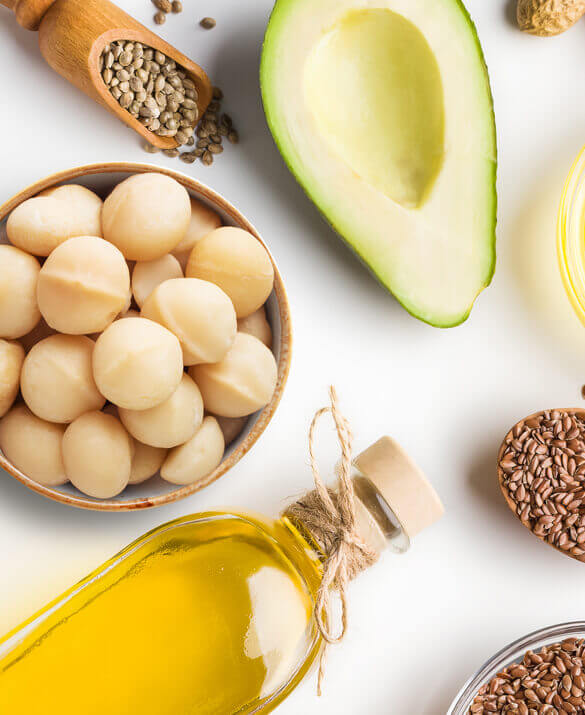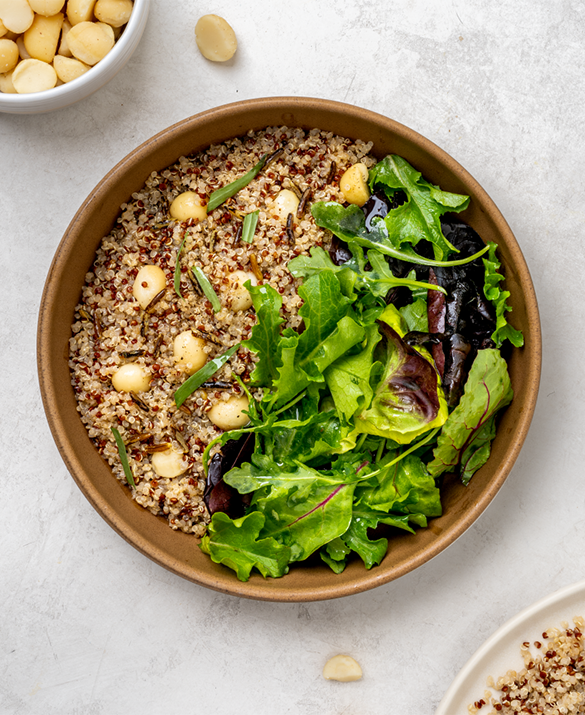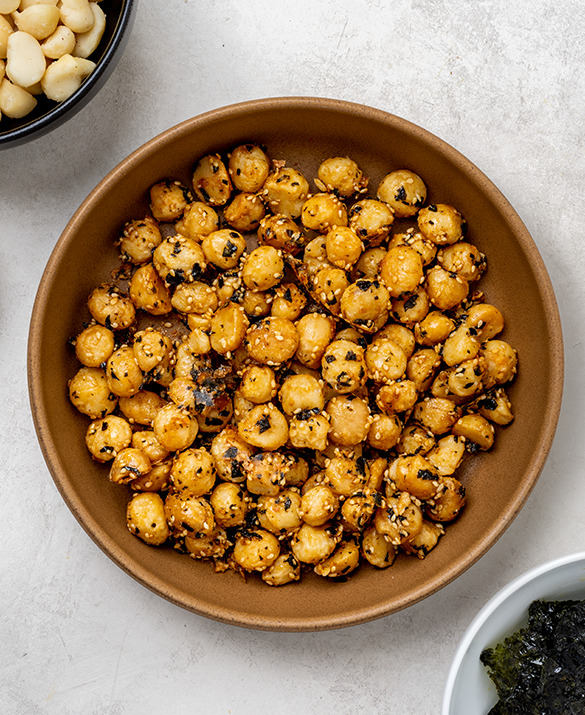For many years, health and wellness trends have aimed to explain the harmful nature of fats in your diet. And while they had good intentions, we now know there’s more to the story. Not all fats are created equally, and fats are certainly not bad. In fact, it’s quite the opposite! Many fats are ‘good’ and an essential part of a healthy and balanced diet.
There are many different kinds of fats that range from healthy to not-so-healthy. But what exactly makes fat healthy, and how can you know which fats are ‘good’?
Let’s dive into this complex story and review the different forms of fat and the typical foods where you can find them to guide you through making clean and balanced decisions for your health.
Understanding the Different Types of Fats
Fat is an essential part of your diet. All natural fats are made up of saturated and unsaturated fatty acids. Fats are called saturated or unsaturated depending on how much of each type of fatty acid they contain.
Your body cannot produce these fatty acids on its own so consuming fat in foods provides your body with the benefits of many core vitamins needed to sustain natural function. For example, vitamins A, D, and E are all fat-soluble, which means they can only be absorbed into the body with the help of fats.
There are three main types of fats in the food we consume: unsaturated fats (natural), saturated fats (natural), and trans fats (yuck!). Let’s review them from healthiest to not-so-healthy.
- Unsaturated Fats
Unsaturated fats contain clean or ‘good fat’ found naturally in plant-based foods and oils. They are liquid at room temperature and considered very beneficial fats because they can support healthy cholesterol levels, fight inflammation, and may even protect brain and cognitive function.
Unsaturated fats are predominantly found in foods from plants such as vegetable oils, avocados, nuts, and seeds and are perfectly healthy to consume as part of a well-balanced diet.
To make things even more complex, there are two main types of fatty acids that make unsaturated fats: monounsaturated and polyunsaturated.
The difference between the two is on a molecular level. Polyunsaturated fatty acids (PUFAs) have more than one carbon double bond in their structure while monounsaturated fatty acids (MUFAs) have a single carbon double bond. The most important takeaway is that they are both a healthy and vital part of your diet. You may have even heard them referred to as “omega fatty acids.”
Monounsaturated fats can be found in foods like olive, peanut, and canola oils, avocados, nuts like macadamia, and seeds such as pumpkin and sesame seeds.
Polyunsaturated fats can only be found in foods like sunflower, corn, soybean, and flaxseed oils, nuts — you guessed it, such as macadamias, flax seeds, and fish.
- Saturated Fats
Saturated fats are commonly found in meat, animal products, and processed or prepackaged foods. They are typically solid at room temperature and can negatively impact your cholesterol levels which can increase your risk of heart disease when consumed in excess.
The American Heart Association recommends replacing foods that are high in saturated fat with healthier unsaturated options because it may lower your risk of heart disease.
Saturated fats can be found in animal-based foods like beef, pork, poultry, eggs, tropical oils like coconut and palm, as well as full-fat dairy products like butter, cheese, and ice cream.
- Trans Fats
Of all the fats, trans fat is the worst form of fat for your health. Trans fats are made when liquid oils are turned into solid fats. These are called partially-hydrogenated oils (PHOs).
Because of the health risks from these fats, the United States Food and Drug Administration (FDA) has banned food manufacturers from adding PHOs to foods.
Common foods that contain trans fats include certain vegetable oils and shortenings, processed baked goods, and heavily fried foods like doughnuts, fried chicken, and french fries.
Consuming too much of these fatty foods in your diet can significantly increase your risk for heart disease and other health problems as well as raised cholesterol.
So when we say ‘good fats’, what exactly do we mean?
Unsaturated fats are considered ‘good’ because of their higher concentration of omega fatty acids. Omega fatty acids are present in certain types of monounsaturated and polyunsaturated fats found in foods (like delicious and nutritious macadamia nuts).
While the true power of omega fatty acids is still being researched, they have been shown to have a range of health benefits including lowering cholesterol, promoting brain function, aiding digestion, and fighting inflammation.
Now to the really good stuff – Getting healthy fats from macadamias
Macadamias are rich in “good” monounsaturated fatty acids and a balanced source of polyunsaturated fatty acids (PUFAs) which in combination are essential to your body’s vitality. This is especially true for PUFAs omega-3 and omega-6 which cannot be produced naturally by the body and must be supplemented by the food you eat.
The fats in macadamia nuts are considered so healthy because of their favorable ratio of omega-6:3, with nearly 6 times the amount of omega-6. Additionally, according to USDA data, most of the fat content in macadamia nuts is monounsaturated omega-7 and 9, which are the cleanest types of fats you can consume. In fact, macadamias have the highest concentration of monounsaturated fats when compared to other nuts!
Here’s a breakdown of some of the most powerful fatty acids present in macadamias and the key health benefits they offer.
Monounsaturated Fatty Acids
- Oleic acid (omega-9) can help improve cardiovascular health when used in place of saturated fats or refined carbohydrates.
Polyunsaturated Fatty Acids
- Linoleic acid (omega-6) is sometimes associated with weight loss, although research is still being conducted.
- Alpha-linolenic acid (omega-3) has been attributed to lowering blood pressure and may reduce the risk of heart attack and stroke.
When incorporated into a well-balanced diet, the ‘good fats’ in macadamia nuts provide a wholesome and natural source of energy and nutrients that are beneficial for healthy living. Those same ‘good fats’ often help keep us fuller longer, which can help curb cravings and promote a healthy weight.
The Perfect Balance of Nutritious and Delicious
One of our goals at Love Macadamia™ is to educate the world on the true goodness that macadamias can bring. Not only are they incredibly good for you, but they also have a heavenly taste and texture profile that can add balance and finesse to any meal or snack.
Follow us on Facebook and Instagram to see how you can channel the power of ‘good fats’ in your wellness journey!
*The nutrition information is in alignment with the United States of America Food & Drug Administration (FDA) regulations. This may differ in other countries.






